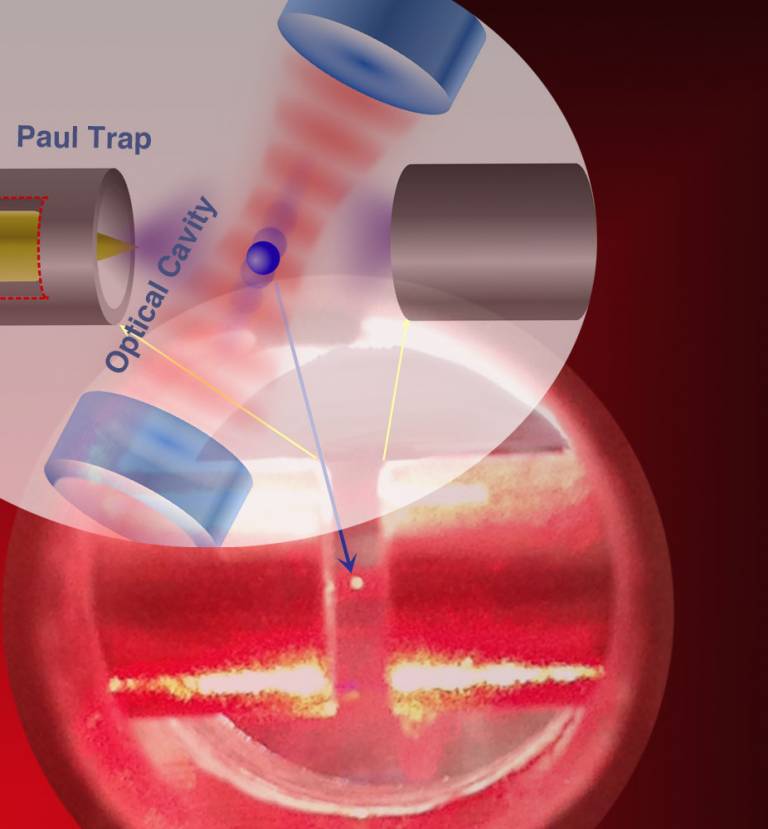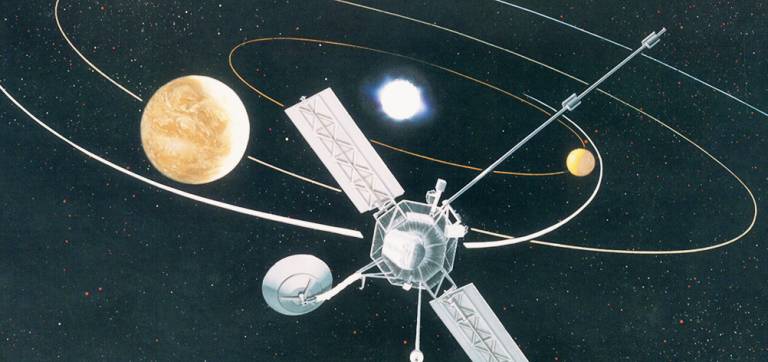UCL team one step closer to achieving quantum ground state
28 October 2016

A team of scientists at UCL, led by Professor Peter Barker and Professor Tania Monteiro have taken another big step forward towards cooling a macroscopic object into the quantum regime. The team "levitated" silica particles of almost half a micrometre diameter in the light field of an optical cavity and succeeded in cooling them, using laser light by a factor of up to one hundred thousand, from room temperature.
The study is published this week as an Editor's Highlight in the journal Physical Review Letters.
The behaviour of quantum particles is quite unlike that of everyday, classical objects around us. Quantum phenomena include superposition, where the position or energy of a particle exists in two or more states at the same time. But quantum phenomena are only easily observable in the smallest of objects, such as atoms or molecules.
Current experiments aim to observe quantum behaviour in particles on the threshold of what is considered macroscopic, which is about a micrometre (still under a tenth of a hair's breadth). The levitated particle is visible to the naked eye, when illuminated by strong light.
One particular characteristic of a trapped quantum particle is that its energy can be quantised so that it can only change in discrete quanta. These are like 'jumps' between distinct rungs of a ladder. In the case of our nanoparticle at room temperature, initially its energy is not quantised but is on average, equal to being about ten million rungs up the ladder.
To get to the quantum regime, we have to bring it down to very close to the first rung; thus to reduce its energy by a factor of 10 million. About two years ago, the group succeeded in levitating the particle in an optical cavity and cooling it by a factor of 100. In the present improved experiment, a thousand fold improvement has been achieved so that in some experimental runs the particle cooled as low as only
a few hundreds of rungs above the first).
There is currently a race between several groups to reach this first energy rung: the quantum ground state. When the particle is that cold, its motion becomes very hard to detect: a quantum particle can never come to a perfect stand-still, like a classical particle, but its lowest possible energy, termed the "zero-point energy" corresponds to a jitter which is a small fraction of the diameter of an atom. Fortunately, an optical cavity offers the world's most sensitive displacement detectors. This technique was exploited earlier this year by the LIGO experiments which used motions smaller than an atomic nucleus to detect gravitational waves for the first time. Using similar methods, we will be able to eventually read out the motion of the levitated particle as it approaches the quantum regime.
According Prof. Peter Barker (UCL Physics & Astronomy) "levitated particles are uniquely decoupled from environmental sources of noise which lead to heating and loss of quantum coherence. They represents ideal systems for studying quantum effects on near macroscopic scales. We are especially interested in investigating these and alternative set-ups for new types of sensors, both for technological applications as well as to test fundamental theories, by detecting extremely weak forces".
The project is supported by EPSRC research grant EP/N031105/1 "Quantum Cavity Optomechanics of Levitated Nanoparticles: from Foundations to Technologies" .
 Close
Close




